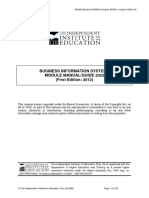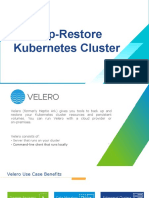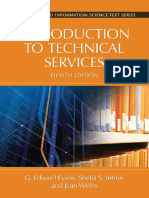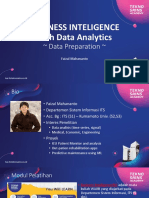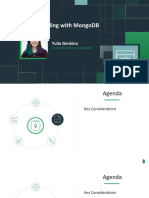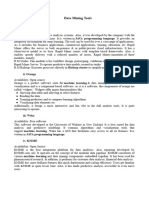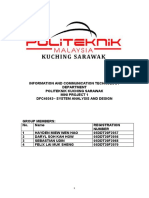UX/UI Cheat Sheet for Interviews & Practice
📌 Core UX/UI Concepts
● U ser Experience (UX)– The overall interaction andsatisfaction users have with a
product.
● User Interface (UI)– The visual and interactive designof a digital product.
● Usability– How easy and efficient it is for usersto accomplish tasks within a
product.
● Accessibility (a11y)– Designing for people with disabilities,including color contrast,
text readability, and assistive technologies.
● User Trust– Building confidence through transparentUI, security measures, and
reliable interactions.
● User-Centered Design (UCD)– A design process thatprioritizes user needs at
every stage.
📊 UX Research & Testing
● U ser Research– Gathering data on user behavior, painpoints, and needs through
interviews, surveys, and analytics.
● Usability Testing– Observing real users interactingwith a product to identify issues.
● A/B Testing– Comparing two versions of a design todetermine which performs
better.
● Affinity Mapping– Organizing research insights intoclusters to find patterns and
key takeaways.
● Competitive Analysis– Evaluating competitors' productsto identify gaps and
opportunities.
● Card Sorting– A method where users categorize contentto improve navigation and
information architecture.
● Personas– Fictional user profiles created from researchto represent different user
types.
● User Stories– Short descriptions of user needs writtenfrom their perspective (e.g.,
"As a user, I want to...").
● Journey Mapping– A visual representation of a user'sinteractions with a product
over time.
● Heuristic Evaluation– An expert review of a UI based on usability principles.
�🖌️ UX/UI Design & Process
W
● ireframing– A low-fidelity blueprint that outlines page layout and functionality.
● Prototyping– An interactive model that simulatesthe final product for testing.
● Information Architecture (IA)– Structuring contentfor easy navigation and
discoverability.
● Visual Hierarchy– Arranging elements based on importanceto guide user attention.
● Atomic Design– A modular design system that breaks UI into small reusable
components (atoms, molecules, organisms).
● Design Systems– A set of reusable UI components,guidelines, and principles that
ensure consistency (e.g., Material Design, Apple HIG).
● Microinteractions– Small animations or feedback mechanismsthat enhance
usability (e.g., button hover effects, loading indicators).
● Gestalt Principles– Psychological principles thatexplain how users perceive UI
elements (e.g., proximity, similarity, closure).
● Dark Mode– A UI design variation with a dark colorscheme for better contrast and
reduced eye strain.
● Neumorphism– A design trend that combines skeuomorphismand flat design,
creating soft, realistic UI elements.
🌟 UX in Fintech & Product Design
● D ark Patterns– Deceptive design tactics that manipulateusers into unwanted
actions (e.g., hidden fees).
● Curb-Cut Effect– The idea that accessibility improvementsbenefit all users, not just
those with disabilities.
● Trust Signals– UI elements that reassure users aboutsecurity and transparency
(e.g., SSL badges, transaction confirmations).
● Frictionless Experience– Removing unnecessary stepsin financial processes to
improve efficiency.
● Gamification– Applying game-like elements (e.g.,progress bars, badges) to
increase engagement.
● Data-Driven Design– Using analytics and user datato inform design decisions.
● Progressive Disclosure– Revealing information progressivelyto avoid
overwhelming users.
● Error Prevention & Recovery– Designing to reduceerrors and provide clear
recovery steps (e.g., undo options, error messages).
● Conversion Rate Optimization (CRO)– Improving designelements to increase
user actions (e.g., sign-ups, purchases).
● Scalability– Designing systems that can grow and handle increased users or
features.
● Edge Cases– Rare but possible scenarios that might break a design or cause
usability issues.
�📈 UX Metrics & Analytics
● C onversion Rate– The percentage of users who complete a desired action (e.g.,
signing up, making a payment).
● Drop-off Rate– The percentage of users who abandona process before completion.
● Time on Task– How long a user takes to complete aspecific action.
● Click-Through Rate (CTR)– The percentage of userswho click on a specific
element (e.g., CTA button, link).
● Bounce Rate– The percentage of users who leave apage without interacting.
● Heatmaps– Visual representations of where users click,scroll, or hover the most.
● Session Recording– Capturing user interactions toanalyze behavior patterns.
● Eye-Tracking– A method that tracks where users focus on a screen.
his cheat sheet is designed tohelp you review keyUX/UI conceptsquickly before your
T
interviews! 💪🏻 Let me know if you need any adjustments!
































































